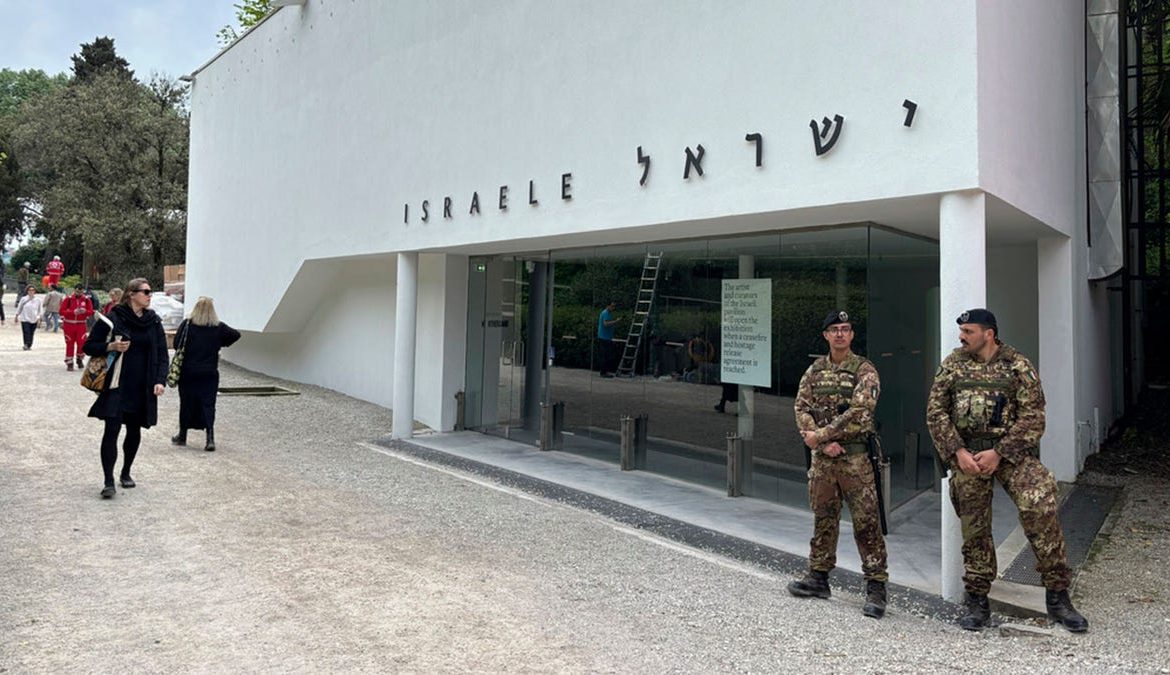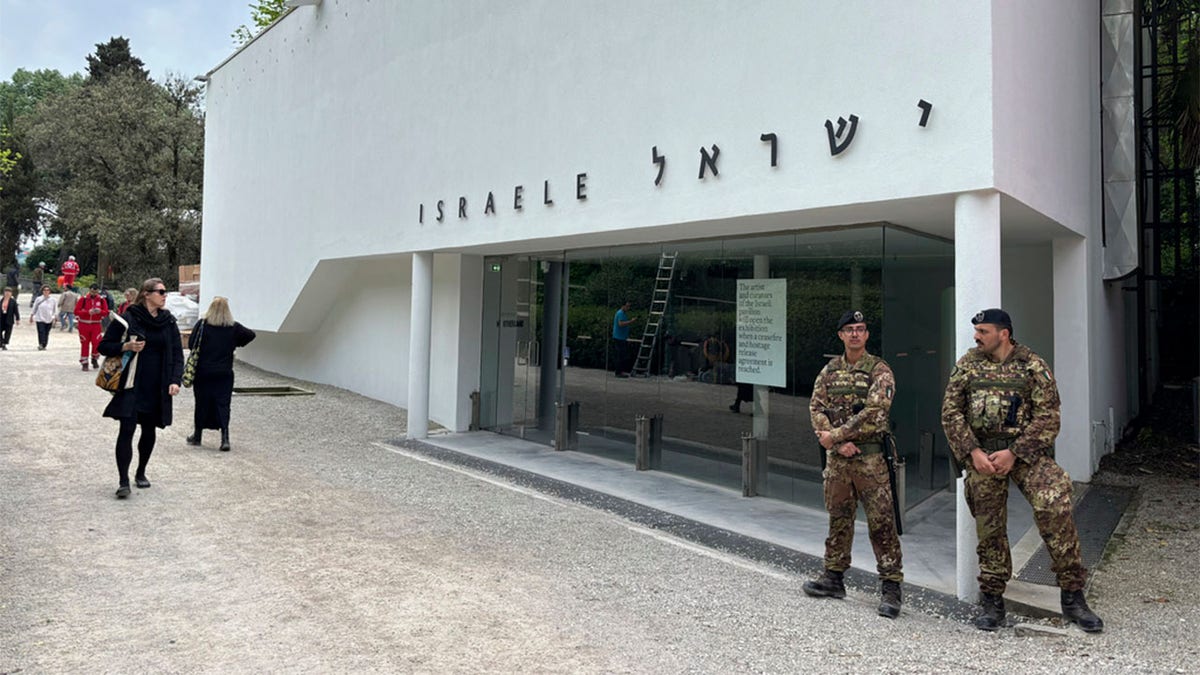
Israeli artist, curators refuse to open exhibit until cease-fire, hostage deal is reached

The artist representing Israel at this year’s Venice Biennale in Italy, along with its curators, said Tuesday they will not open the Israeli pavilion until a cease-fire and hostage deal are reached in Israel’s months-long war with Hamas in the Gaza Strip.
A sign on the window of the Israeli pavilion posted Tuesday and written in English reads: ‘The artist and curators of the Israeli pavilion will open the exhibition when a cease-fire and hostage release agreement is reached.’
In a statement, artist Ruth Patir, said she and the curators wanted to show solidarity with the families of the hostages ‘and the large community in Israel who is calling for change.’
‘As an artist and educator, I firmly object to cultural boycott, but I have a significant difficulty in presenting a project that speaks about the vulnerability of life in a time of unfathomed disregard for it,’ Patir said in the statement.
Israel is among 88 national participants in the 60th Venice Biennale, which runs from April 20-Nov. 24. The Israeli pavilion was built in 1952 as a permanent representation of Israel inside the Giardini, the original venue of the world’s oldest contemporary art show and the site of 29 national pavilions. Other nations show in the nearby Arsenale or at venues throughout the city.
But even before the statement, curators and critics had signed an open letter calling on the Biennale to exclude the Israeli national pavilion from this year’s show to protest Israel’s war in Gaza. Those opposed to Israel’s presence had also vowed to protest on-site.
Italy’s culture minister had firmly backed Israel’s participation, and the fair was opening amid unusually heightened security.
The national pavilions at Venice are independent of the main show, and each nation decides its own show, which may or may not play into the curator’s vision. Patir’s Israeli exhibit was titled ‘(M)otherland.’
The curators of the Israeli pavilion, Mira Lapidot and Tamar Margalit, said they were delaying the opening of the exhibit because of the ‘horrific war that is raging in Gaza,’ but that they hoped the conditions would change, so the exhibit could open for public view.
‘There is no end in sight, only the promise of more pain, loss, and devastation. The exhibition is up and the pavilion is waiting to be opened,’ they said. For now, a video work made by Patir can be seen through the pavilion window.
The (M)otherland exhibit was set to run from Saturday, April 20, through Sunday, November 24.
The Associated Press contributed to this report.
